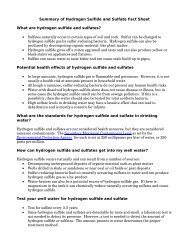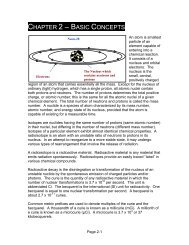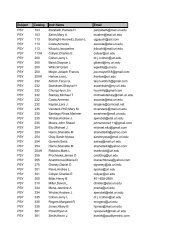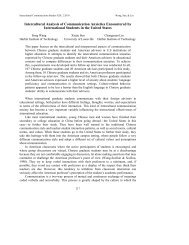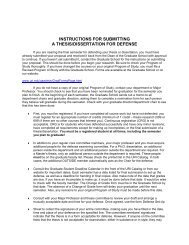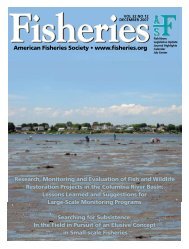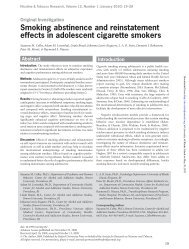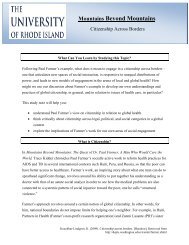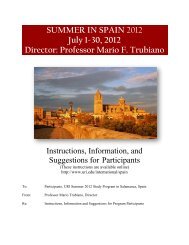Appendix A Standard Operating Procedures - University of Rhode ...
Appendix A Standard Operating Procedures - University of Rhode ...
Appendix A Standard Operating Procedures - University of Rhode ...
You also want an ePaper? Increase the reach of your titles
YUMPU automatically turns print PDFs into web optimized ePapers that Google loves.
. If a particular location has a history <strong>of</strong> high levels <strong>of</strong> fecal coliforms or if there is<br />
reason to suspect that high levels may be present due to events such as large<br />
rain storms, several sets <strong>of</strong> diluted plates should be prepared.<br />
Preparation <strong>of</strong> dilutions<br />
i. Ambient water samples that must be diluted are generally diluted to 1, 10<br />
and 100 mL.<br />
ii. Prepared dilutions should be filtered sequentially in a single filter funnel in<br />
the following order: 1 mL, 10 mL and 100 mL. This will ensure there is no<br />
cross-contamination. Remember, only one filter and one dilution per<br />
plate.<br />
iii. A sterile 1 mL or 10 mL pipette is used to dispense the appropriate<br />
volume. Approximately 10 mL <strong>of</strong> PBS should be added to the funnel prior<br />
to adding sample volumes less than or equal to 10 mL to ensure<br />
adequate dispersal <strong>of</strong> bacteria throughout the filter.<br />
iv. See Elizabeth Herron for guidance on appropriate sample dilution values<br />
as they may change over time.<br />
5. Repeat steps 3 and 4 until all 4 filter funnels have sample in them.<br />
6. Open the valve <strong>of</strong> each <strong>of</strong> the filter funnel setups, and turn on the vacuum pump.<br />
7. After all the samples have filtered through, use the squirt bottle containing PBS to rinse<br />
the inside <strong>of</strong> each funnel approximately three times to wash any stray bacteria onto the<br />
filter. Do not touch the tip <strong>of</strong> the squirt bottle to the inside <strong>of</strong> any <strong>of</strong> the funnels. This<br />
will contaminate other samples.<br />
8. Turn <strong>of</strong>f the vacuum pump.<br />
9. Flame sterilize the forceps and shut <strong>of</strong>f the valve for the first funnel.<br />
10. Carefully remove the filter from the first funnel with the sterilized forceps.<br />
11. Carefully place the filter onto the media <strong>of</strong> a labeled Petri dish, grid side up, so there are<br />
no bubbles apparent. Touch the outer edge <strong>of</strong> the filter with the forceps until it is<br />
completely flat. If it appears there are bubbles in the media pick up the filter and lay it<br />
onto the media again.<br />
12. Put the cover back on the plate, invert the plate and set it aside.<br />
13. If additional dilutions or replicates will be completed on the sample, place a sterile filter<br />
on the empty filter base and add the next dilution or replicate. The forceps do not have<br />
to be re-sterilized for this step provided they have not made contact with anything but the<br />
sterile media or a more dilute sample.<br />
14. Repeat steps 9 through 13 for the rest <strong>of</strong> the filter funnels.<br />
15. Once all dilutions and replicates for the first set <strong>of</strong> 4 samples have been filtered, place<br />
the plates with filters into the 35 ºC incubator for 2 hours. Plates should be inverted and<br />
stacked no higher than 2.<br />
16. Remove the filter funnels and base replacing them with sterilized ones from the UV box<br />
for the next set <strong>of</strong> samples. Put the non-sterile filter funnels into the UV box and turn the<br />
UV lights on by closing the lid and depressing the button.<br />
17. Repeat the procedure until all <strong>of</strong> the samples have been processed.<br />
15 <strong>of</strong> 23<br />
Ambient Waters Microbiological Procedure SOP 007<br />
S:\WW\awwword\LABPROC\all QAPPs\LABQAPPs\QAPP Rev5 -0609\SOPs\SOP 007AmbientMicrobes.doc



